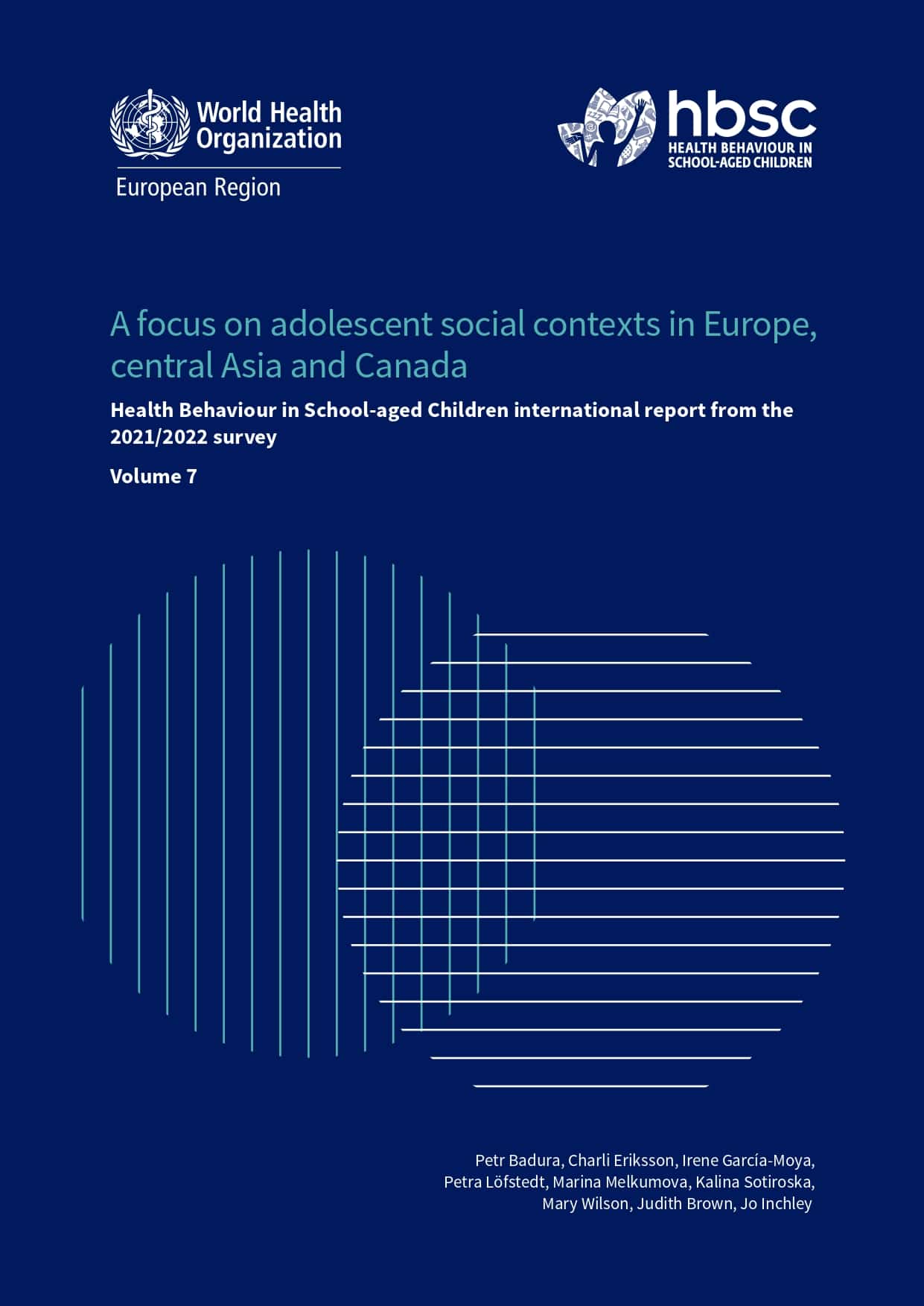Topic
Social contexts
The social environments in which adolescents live, learn, and develop play a crucial role in shaping their health and well-being. From family relationships and peer connections to school experiences, these social contexts provide the foundation for adolescent development and influence behaviours, attitudes, and health outcomes. Understanding how young people experience and interact with their various social environments is essential for promoting positive development and identifying areas where additional support may be needed.
This section of the HBSC study explores multiple dimensions of adolescents’ social worlds, including family dynamics, peer relationships, and school experiences. By examining these interconnected social contexts, we can better understand the support systems available to young people, identify potential protective factors, and inform interventions that strengthen positive social connections and promote healthy development.
Select one of the indicators below to view data.
Key Findings
A focus on adolescent social contexts in Europe, Central Asia and Canada

Family and peer relationships
- Three quarters (74%) of adolescents reported living with both parents, but there were large variations in rates by country/region.
- Around two thirds (68%) of adolescents reported high levels of family support.
- Eight out of 10 (83%) adolescents found it easy to talk to their mother and seven out of 10 (71%) to their father.
- Boys reported higher family support, easier communication with both mother and father and taking family meals more frequently than girls. Gender differences in ease of communication with parents were particularly pronounced for talking to fathers, compared with talking to mothers.
- Girls (62%) were more likely than boys (55%) to report high levels of support from their peers.
- The proportions of adolescents rating their social contexts positively decreased with age.
- Higher family affluence was linked with higher levels of support from family and peers, easier communication with parents and more frequent daily family meals.
- Family and peer contexts have become less favourable since 2018, particularly for girls aged 13 and 15. The gender disparity in family-related indicators has widened, with the gap at its largest since 2014.
- Around half of adolescents reported high support from both family and their peers, but one in five (21%) did not perceive high support either from their families or peers.
- Adolescents perceiving high support from both family and their peers rated their mental health better than those with high support from just one source or none.
- Having high support only from family was associated with more favourable mental health outcomes than having high support only from peers.
- Large cross-national/regional variations and apparent geographical patterns across all measures indicate the strong cultural dependence of family and peer relationships.
School experience
- School satisfaction was highest at age 11 (34%) and decreased with age thereafter (19% at age 15).
- School pressure increased with age, especially in girls. The gender gap grew, with girls aged 13 and 15 years reporting higher levels of pressure from schoolwork than boys.
- Teacher support decreased for both boys and girls between 11 (68%) and 15 (42%) years. Gender differences were found in teacher support, with 13- and 15-year-old girls being less likely to report high support from teachers.
- Classmate support was higher at age 11 and tended to decrease at older ages in girls and to a lesser extent in boys.
- Variability was seen across countries and regions, with differences in levels of school satisfaction, school pressure and teacher and classmate support. The magnitude and direction of gender and age differences also varied.
- No significant socioeconomic differences in school experience were identified in most countries and regions.
- Compared with 2018, young people, especially girls, generally reported more negative school experiences.
Cite this data
Badura P, Eriksson C, García-Moya I, Löfstedt P, Melkumova M, Sotiroska K et al. A focus on adolescent social contexts in Europe, central Asia and Canada. Health Behaviour in School-aged Children international report from the 2021/2022 survey. Volume 7. Copenhagen: WHO Regional Office for Europe; 2024. Licence: CC BY-NC-SA 3.0 IGO.
Youth Commentary
“The role of family is very important because with family we have someone to confide in, we can talk about what happens to us on a daily basis and we can be happier.”
(Girl, Portugal)
Explore topics
Mental health
Bullying & violence
Substance use
Physical activity
Eating behaviours
Obesity & body image
Sexual health
Social media
Social contexts
Sign up for updates
Be among the first to access new international reports from the Health Behaviour in School-aged Children (HBSC) study, featuring 2021/22 data.
Complete the form to join our email alert list and receive notifications as soon as new reports are available. You can unsubscribe at any time by replying to one of our emails.
By clicking ‘Sign up’ you agree to receive email notifications about new HBSC study reports. For information about how we handle your data, please check our privacy policy.